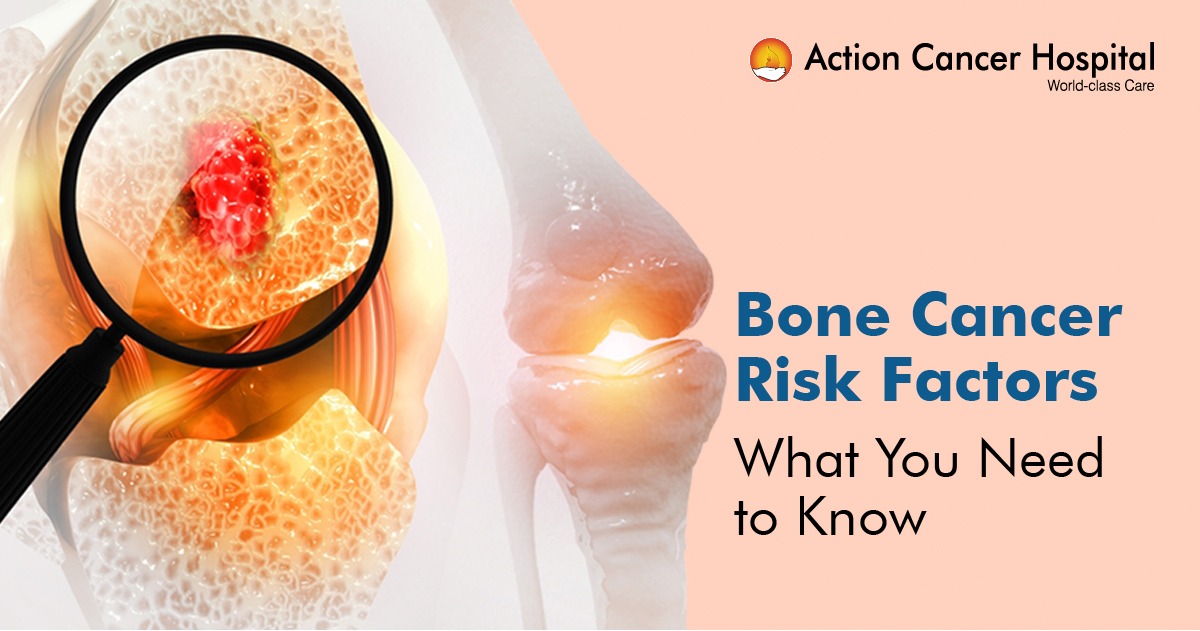Bone Cancer Risk Factors: What You Need to Know
Bone cancer, though relatively rare compared to other types of cancer, can be a challenging and complex condition. Understanding the risk factors associated with bone cancer is crucial for early detection, prevention, and effective management. In this comprehensive article, we explore the various factors that contribute to the development of bone cancer and offer insights into what you need to know to safeguard your bone health.
Understanding Bone Cancer
Before delving into the risk factors, let's grasp the basics of bone cancer. Bone cancer can either originate in the bone itself (primary bone cancer) or spread to the bone from other parts of the body (secondary or metastatic bone cancer). Primary bone cancer is less common and includes subtypes like osteosarcoma, Ewing sarcoma, and chondrosarcoma.
Risk Factors: Understanding Contributors to Bone Cancer
1. Age:
Age is a significant factor in bone cancer risk. Primary bone cancer often affects individuals under the age of 20 or those over 65, while secondary bone cancer is more prevalent in older adults.
2. Genetic Factors:
Certain hereditary conditions elevate the risk of bone cancer. Conditions like Li-Fraumeni syndrome and hereditary retinoblastoma are associated with an increased likelihood. Additionally, inherited conditions affecting bone health, such as multiple exostoses, also play a role in raising susceptibility.

3. Radiation Exposure:
Previous exposure to high-dose radiation, whether for cancer treatment or other medical reasons, is a known risk factor for bone cancer. Individuals with a history of radiation exposure should be vigilant about monitoring their bone health.
4. Paget's Disease:
Paget's disease, characterized by abnormal bone growth, is linked to an increased risk of developing bone cancer. Individuals with Paget's disease require close attention to detect potential cancerous developments early on.
5. Chemical Exposures:
Exposure to certain chemicals heightens the risk of bone cancer development. Substances like beryllium and vinyl chloride, found in certain occupational and environmental settings, may contribute to the development of bone cancer.
6. Bone Marrow Transplants:
Individuals who have undergone bone marrow transplants face an elevated risk of developing bone cancer. This underscores the importance of careful monitoring and proactive health management for this group.
7. Gender:
Gender plays a role in the prevalence of specific types of bone cancer. For instance, osteosarcoma is more commonly found in males, while chondrosarcoma has a higher incidence in females. Understanding these gender-based patterns aids in targeted awareness and screenings.
8. Race:
Racial disparities exist in the occurrence of certain bone cancers. Ewing sarcoma, for example, occurs more frequently in white individuals. Acknowledging these disparities emphasizes the need for tailored prevention and early detection efforts.
9. Bone Diseases:
Pre-existing conditions affecting bone health contribute to an increased susceptibility to bone cancer. Individuals with conditions like Paget's disease and enchondromatosis should be aware of their heightened risk and prioritize regular check-ups.
10. Growth Spurts:
Rapid bone growth during adolescence may be linked to an increased risk of osteosarcoma. Understanding this association is crucial for healthcare providers and parents to monitor bone health during periods of rapid growth.
Recognizing these contributors enables healthcare professionals to create preventive strategies and encourages individuals to be proactive in monitoring their bone health.
Prevention Strategies For Your Bone Health
While certain risk factors for bone cancer may be beyond our control, adopting specific lifestyle measures is crucial in promoting overall bone health and potentially lowering the risk of developing bone cancer. Here are key prevention strategies to consider:
Maintain a Healthy Lifestyle
Eating a balanced diet rich in calcium and vitamin D is fundamental for bone health. These nutrients contribute to bone strength and density, reducing the risk of bone-related issues. Incorporate dairy products, leafy greens, and fortified foods into your diet.
Regular exercise is a cornerstone of overall well-being and has protective effects on bones. Weight-bearing exercises, such as walking, jogging, or weightlifting, stimulate bone growth and help maintain bone density. Aim for at least 150 minutes of moderate-intensity exercise per week.
Protective Gear
Individuals involved in activities with a risk of injury, such as contact sports or construction work, should prioritize the use of appropriate protective gear. Helmets, knee pads, and other protective equipment can prevent bone damage and reduce the likelihood of injuries that may contribute to bone cancer.
Quit Smoking.
Smoking is associated with various cancers, and its detrimental effects extend to bone health. Quitting smoking has numerous health benefits, including a positive impact on bone density. Seek support and resources to quit smoking, promoting a healthier lifestyle.
Limit Exposure to Harmful Chemicals
Reduce exposure to chemicals known to be associated with an increased risk of bone cancer. Be aware of your surroundings, especially in occupational settings, and take precautions to minimize exposure to harmful substances. This may include wearing protective clothing and using ventilation systems.
Regular Check-ups
Early detection is crucial in managing and preventing the progression of bone cancer. Schedule regular check-ups with healthcare professionals to monitor your overall health and promptly address any unusual symptoms or conditions. Be proactive in discussing your family history and any potential risk factors with your healthcare provider.
Incorporating these prevention strategies into your lifestyle can significantly contribute to maintaining optimal bone health and reducing the risk of bone cancer. By fostering awareness and adopting proactive measures, individuals empower themselves to take charge of their well-being. Remember, early intervention and a proactive approach to bone health play pivotal roles in preventing and addressing bone cancer effectively.
In conclusion, bone cancer is a complex condition influenced by a variety of factors, both genetic and environmental. Understanding these risk factors is essential for early detection, prevention, and effective management. While some risk factors are beyond control, individuals can take proactive steps to maintain overall bone health and reduce the likelihood of developing bone cancer. Regular check-ups, a healthy lifestyle, and awareness of family history can significantly contribute to the prevention and early detection of bone cancer.






